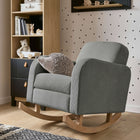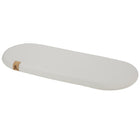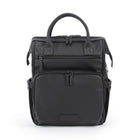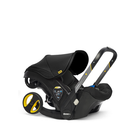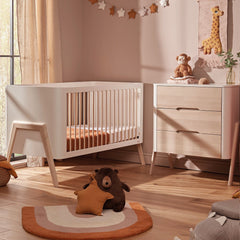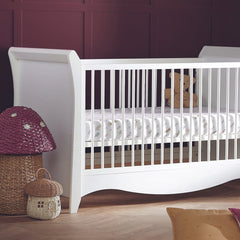

looking for something specific?
take a look at our blog categories and get the advice and guidance you need!
Tips & Tricks
becoming a parent is one of the greatest things in life, but it can also be one of the scariest! the uncertainty of what parenthood will bring can spook anyone, but we hope to calm those nerves with a little advice from the experts.

The start of the weaning journey can be an overwhelming time for both parents and baby. There are many worries parents share when approaching the weaning stage. However, most of these concerns have logical answers.
The most common anxieties parents share are surrounding their baby’s safety. For instance, how to tell the difference between gagging and choking is a fear for many. This is why this Child Safety Week, we want to give you an introduction to safe weaning and address any doubts you may have before you and your baby start the weaning journey.
What is Weaning?
Weaning is the introduction of solid foods alongside your baby’s usual breast milk or first infant formula. Solid foods are usually introduced around 6 months of age.
What is Baby Led Weaning?
Baby-led weaning is where you allow your baby to feed themselves rather than spoon-feeding them. You offer them a selection of foods to choose from themselves.
Weaning Essentials
-
High Chair – your baby needs to learn from an early age that they must be sat down when eating so that they can swallow their food properly. Always make sure that they are sat upright and strapped in. Remember, never leave your baby unattended when eating.
-
Muslin Cloths – you will probably already have plenty of these from when your baby first arrived. But these will also come in handy during spoon-feeding to clean up any spills or sick.
-
Bibs – weaning can get messy. So plastic bibs are the best for the beginning.
-
Plastic bowls – that have individual compartments are ideal to keep different flavours and textures separated. You should also opt for bowls with a suction pad to avoid any accidents.
-
Soft spoons – that are safe for your baby’s gums.
Introducing New Textures
When planning what meals to feed your baby, you should consider the size, shape and texture of the food you will be serving them. It is important to keep in mind that some babies may need smooth or blended foods to start with until they get used to new textures.
However, don’t worry if your baby refuses lumpy textures at the beginning. The NHS encourages you to keep offering your baby lumpy textures. They will get used to them eventually. The introduction of lumpy and mashed food alongside finger foods is essential. It helps your baby learn to chew, move solid food around their mouth and swallow.
Be Patient
Remember that patience is key when introducing your baby to new foods. Eating is a whole new skill for them, and you should always go at your baby’s pace.
How to Serve Food Safely
Hygiene
Babies are highly vulnerable to bacteria that can cause food poisoning. Therefore, you need to be extra careful when preparing and storing food for your little one. Basic hygiene, like washing your hands before preparing food. Should always be followed. But if you need a knowledge refresh, take a look at the BBC Good Food guide to safely preparing and storing food here.
Preparing Food
The main worry mums have when weaning their baby is the risk of choking. Choking can happen at any time with any food. But certain foods, such as small round foods, firm foods and foods with bones, can present a higher risk.


DO
- Remove hard pips and stones from fruit.
- Cut food into narrow batons.
- Avoid round shapes.
- Try grating, mashing, steaming or simmering firm fruits.
- Remove the skin on fruit, vegetables and meat.
- Remove all bones from meat or fish.
DON’T
- Do not give whole nuts to children under 5 years old.
- Do not give babies and young children boiled, hard, gooey or sticky sweets.
- Do not give popcorn to babies and young children.
- Do not give babies chewing gum or marshmallows.
For a full list of foods to avoid read the Start 4 Life safe weaning guide here.
Family Mealtimes
During mealtimes, you and your family members should all sit down together as much as possible. Mealtimes are the perfect opportunity for your baby to observe how you eat. By acting as good role models when eating, they can learn from the beginning how to eat safely. Babies copy their parents and other children, so it is important that you are a positive influence. You can do this by sitting upright, breaking your food up and chewing properly.
Gagging
It is normal for your baby to gag when you introduce them to solid foods. As we mentioned earlier, eating is a whole new skill for them. It will take them time to learn how the regulate the amount of food they can chew and swallow at one time.
Further Information
For more information regarding how to know when your baby is ready to wean. Or how to tell the difference between gagging and choking. You can visit the NHS website. You can also ask a health professional for support.

Whether you are a first-time mum or are expecting your second child, it is important to refresh your knowledge on safe sleeping practices for babies. Becoming a parent comes with new-found anxieties that you have never experienced before. And sometimes, these worries can overshadow your first few weeks of bonding with your little one. To help you conquer any fears you may have about putting your baby to sleep. We have created this blog post where you can find advice, guidance and the Do’s and Don’ts of safe sleeping.
What is Safe Sleeping Advice?
Safe sleeping advice is introduced to expecting parents to ensure that they are taking the necessary actions to significantly reduce the risk of sudden infant death syndrome (SIDS). Also more well known as cot death. It provides parents with the information they need to put their baby to sleep safely through the day and night.

Where Should my Baby Sleep?
The NHS recommends that for the first 6 months, your baby should sleep in the same room as you. The safest place for your baby to sleep is either in a moses basket, crib or cot. Always make sure that you place your baby on their back to sleep.
Can my Baby Sleep in my Bed?
As advised by the Lullaby Trust, babies should sleep in a clear, safe sleep space, which is easy to create in a cot or moses basket. However, it is a personal choice. Below is some guidance from the Lullaby Trust on how to make your bed a safer place for your baby to sleep.
DO
- Ensure that you keep pillows, sheets, blankets and any other items that could obstruct your baby’s breathing or cause them to overheat away from them.
- Make sure that your baby won’t fall out of bed or get trapped between the mattress and the wall.
- Follow all other safer sleep advice.
DON'T
- Do not let pets or other children in the bed.
- Do not co-sleep if you or your partner smoke.
- Do not co-sleep if you or your partner has drunk alcohol or taken drugs (including medications that may make you drowsy).
- Do not co-sleep if your baby was born premature or at a low weight.
- Never sleep with your baby on a sofa or armchair.
You should never share a bed with your baby if any of the points above apply to you or your partner.
What Type of Blanket Should I use to Cover my Baby?
You should never cover your baby with a bulky quilt, duvet or fluffy blanket. This type of bedding can make it difficult for your baby to breathe and cool down. Lightweight blankets are the best type to use as you can easily adjust the temperature by layering one or more. Remember, a folded blanket counts as 2 blankets.
Your baby’s blanket should not go above their shoulders. To prevent their blanket from moving in the night, tuck it securely under their arms. You should also place them in the ‘feet to foot’ position. It means that their feet are at the end of the moses basket, crib or cot. Instead of a blanket, you may want to use a well-fitting baby sleep bag with the correct tog value.
How do I Know if my Baby is too Warm or Cold?
According to experts, the ideal temperature for your baby’s room is between 16 and 20 degrees. The best way to check if your baby is too warm is by checking the back of their neck to make sure their skin doesn’t feel hot, clammy or sweaty to touch. But remember, if they are unwell, they may feel warmer than usual. In this instance, you would use fewer bedclothes. Another way to check whether the temperature in your baby’s room is comfortable is to get a room thermometer.
What Should my Baby Wear for Bed?
The first thing to take into account when dressing your baby for bed is their room temperature. Knowing the temperature of their nursery will help you make an informed decision on what to dress them in. Remember your baby should never wear a hat to bed as their head is important for maintaining their body temperature. It is how they release heat.
Below is a helpful infographic with guidance on what your baby should wear to bed, depending on what the room temperature is.

Does Breastfeeding Reduce the Risk of SIDS?
Yes. A 2017 study found that breastfeeding for at least two months, even if supplemented with formula, can cut the risk of SIDS in half. Furthermore, the Department of Health recommends that babies are fed only breast milk for at least 6 months.
Unfortunately, breastfeeding isn’t an easy experience for every new mum. But if you’re struggling, you can reach out to the National Breastfeeding Helpline for advice and help on 0300 100 0212.
More Safe Sleeping Practices
- Use a firm and flat mattress that is protected by a waterproof cover, making sure that it is the correct size for your moses basket, crib or cot.
- Don’t use sleep positioners to keep your baby in one position unless advised by a health professional.
- Keep your baby’s sleep space clear of pillows, bumpers, soft toys, pods or nests.
- Keep your home smoke free.
Always Ask if Unsure
When it comes to the safety of your baby, no question is stupid. Your midwife or health professional will be happy to answer any questions you may have. There are also many trusted organisations online, such as the Lullaby Trust or the NHS, that have a great range of resources that cover safe sleep practices.

Child Safety Week is a community education campaign that happens once a year and is championed by the Child Accident Prevention Trust. The charity’s aim is to reduce the number of children and young people killed, disabled or seriously injured in accidents. One way the charity works towards this is by giving free child safety advice to parents and carers to ensure that they have the tools and information required to keep their little ones safe.
This year, Child Safety Week runs from Monday 6th to Sunday 12th of June with the theme of Safety in mind.
In honour of this important week, we have decided to use our resources and expert knowledge to create a series of blog posts. These posts will be dedicated to 4 different safety topics to inform you about real risks that your children are exposed to daily. However, the purpose of these blog posts isn’t to instil you with fear. Instead, we want to provide you with the information you need to deal with these situations confidently and calmly.
The Safety Topics
In this blog, we will cover the main aspects of safe sleep for babies to reduce the risk of sudden infant death syndrome (SIDS). We will focus on common questions about safer sleep and precautions you and your family can take before putting your baby to sleep.
This post is a must-read if you are about to start the weaning journey with your baby. We will empower you with the knowledge you need to safely wean your baby. And will look at weaning essentials, foods to avoid and much more.
A car seat is one of the many things you need to buy before your baby is born. This blog post will act as a guide to choosing the most suitable car seat for your new arrival and will help you better understand the safety regulations and laws in place.
Taking the time to baby-proof your house is an important process that all parents will have to go through before your little one is able to crawl. If you are unsure where to start, this blog post is an essential read.
Make sure you check back in each day this week when we will be publishing a new safety article. For more information on Child Safety, make sure you head over to the Child Accident Prevention Trust (CAPT) website.
In the meantime, you can read the safety-related blog posts that we already have on our website, such as ‘What is the Best Cot Mattress for Your Baby' and ‘How to Get a Baby to Sleep on Its Back’.
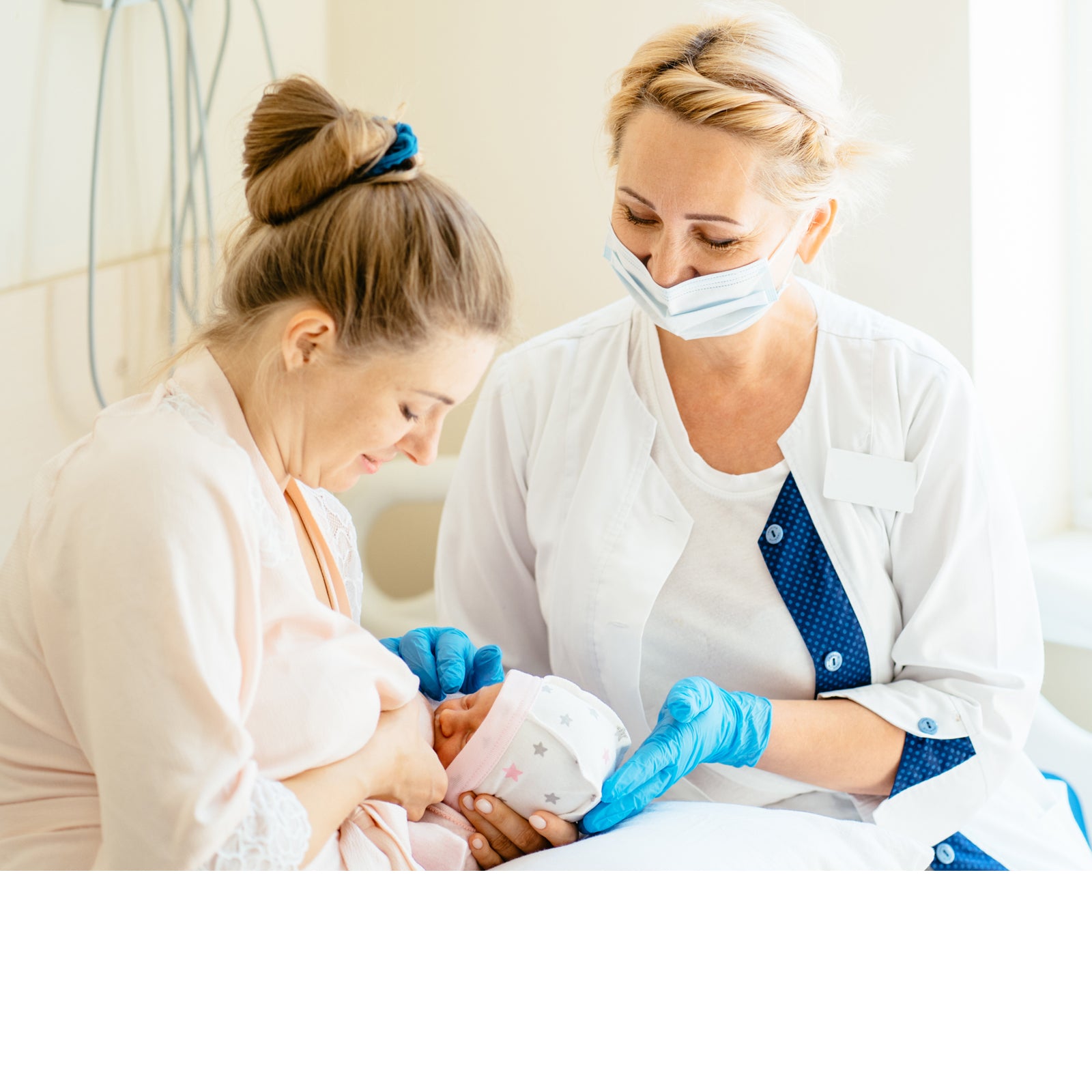
Nursing pillows can sometimes get forgotten about in the never-ending list of things you need to purchase before the arrival of your baby. Although they are not deemed an essential for mums-to-be, they are definitely a useful product to help you and baby feel more comfortable during feeding.
What is a Nursing Pillow?
A nursing pillow, also known as a breastfeeding pillow, is a C shaped or U shaped pillow that supports you and your baby during breastfeeding or bottle feeding. They wrap comfortably around your body, adapting to your shape and providing a safe place for your baby to rest as they feed. You will find them in a range of prints and styles. But essentially, they are all designed to help make nursing easier and to reduce neck, arm and back strain for you.
Our Mother&Baby Feeding & Infant Support Pillow
Can I use a Feeding Pillow After a C-Section?
A caesarean birth might make breastfeeding more difficult due to several reasons, such as loss of mobility or a long and stressful labour. However, with extra support from your midwife, you should be able to find a breastfeeding position that is comfortable for you. One position that the NCT recommends is the ruby-ball or underarm position, as it might help keep your baby away from your scar. They further suggested that you may want to place a pillow under your arm to help support your baby's weight after they have latched on. Other C-section friendly positions they advise are lying down on your side and laid-back breastfeeding.

Why Should I Buy a Nursing Pillow?
Nursing pillows are especially handy if you plan on breastfeeding your baby. Lactation consultant Wendy Wisner advises keeping baby close with skin-to-skin contact during the first few days of breastfeeding. She explained, “This way, anytime your baby looks for the breast, it will be right there. Rooting, head bobbing, fist sucking, mouth fluttering—these are all signs your baby is hungry.”
Trying to maintain skin-to-skin contact for long periods of time can become tiring for your arms. You may find it even more uncomfortable if you have had a caesarean. Therefore, having a breastfeeding pillow to help support the weight of your baby can make the experience more enjoyable for the both of you.
What if I’m Expecting Twins?
If you are expecting twins and want to breastfeed them, you may want to consider tandem feeding. For this, a twin feeding pillow will help you and your babies find the perfect latch position.

Things to Consider When Choosing a Nursing Pillow
- Is it washable? – It is worth considering whether the pillow itself is washable or if it comes with a removable cover that can be washed.
- Does it have a certified organic cotton cover? – To avoid your baby’s sensitive skin encountering any nasty chemicals or dyes, you will need to ensure that the cover is GOTS certified (Global Organic Textiles Standard).
- The shape – As we mentioned earlier, most nursing pillows are either C shaped or U shaped. Before your baby arrives, we recommend shopping around and trying each shape to find the most comfortable pillow.
- Is it adjustable? – Many feeding pillows are adjustable and feature a strap or belt to secure the pillow around your waist.
Support Pillows and Your Growing Baby
You can continue to use most feeding pillows as your baby grows to help them with their key development stages. The pillows can be used to support baby with tummy time and sitting up. The NHS advises to only do tummy time when your baby is awake and alert. You should never leave your baby on their own propped up by a nursing pillow.

With your baby on the way, you'll need to know how to get everything ready for your new arrival. See our tips for setting up your baby changing table.

If space is limited, but you refuse to compromise on quality, here is our guide on how to arrange furniture in a small nursery. Read on to discover our tips now.

Life can be chaotic with a newborn. Staying organised can truly preserve your sanity. Check out our nursery organisation tips and storage hacks.

As your mind turns to weaning, you'll have a few decisions to make — what's the best high chair? Discover the best highchairs that adapt to grow with your baby!
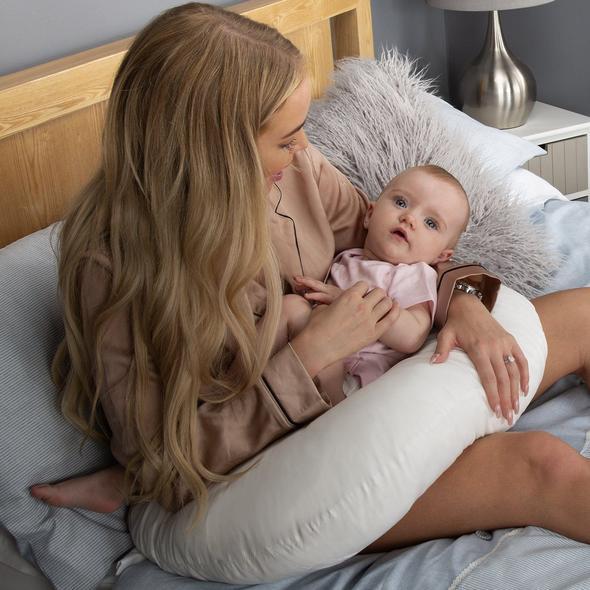
Babies are all unique and individual, even as newborns. But they all love milk, so make feeding time more comfortable for both of you.

Whether you’re still pregnant and are setting up your baby’s nursery or your little bundle has already arrived, you’re probably spending a lot of time thinking about how you’ll get your tot to sleep.

When do babies outgrow a changing table? Read on to find out why you should stop changing them on the changing unit and tips to make nappy changing less stressful for you and baby.

If you're set on creating a stunning minimalist nursery, check out these white nursery furniture ideas for the ultimate modern nursery.
check out our latest articles
Bring to life the magic of Christmas
How to make Baby's first Christmas Extra Special Your baby's first Christmas is a magical milestone. While your little one may be too young to r...
read moreThe Best Black Friday Baby Deals 2024
With Black Friday just around the corner, or already here for some parenting brands, including us! First time parents will be on the hunt for the...
read moreHow to Create a Gender-Neutral Nursery
The trend for gender-neutral nursery interiors has continued to grow over the last two years with celebrities such as Molly-Mae Hague opting for ...
read moreHow to Choose a Baby Changing Table
Choosing a Baby Changing Table Newborns go through nappies at a rate of about 70 nappies per week. That equates to a lot of time changing nappies a...
read moreBanana Oat Pancakes for Weaning Babies
Pancake Day is the perfect opportunity for the whole family to sit down together and enjoy some tasty treats. Paediatric Dietitian, Kat Martinez-...
read moreEverything You Need to Know Before Designing Your Perfect Nursery
The rollercoaster journey of pregnancy is filled with its fair share of ups and downs. From shifting hormones and numerous anti-natal appointment...
read moreHow to Buy Gender-Neutral Furniture
Move over pink and blue, gender-neutral is here to stay. Gender-neutral designs for your little one’s room and furnishings are becoming increasingl...
read moreNursery Checklist: The Essentials You'll Need
You won’t be surprised to learn that having a baby comes with a lot of new “stuff” that you never needed previously. But it can be hard to work o...
read moreHow to Choose the Right Cot Bed For Your Baby
Though it might not seem like it to sleep-deprived mothers, babies sleep most of the time during their first two years of life. This means that the...
read moreHow to Teach a Baby to Self-Soothe
You’ve rocked your baby to sleep. Sung them to sleep. Breastfed or bottle-fed them to sleep. You’re an expert at sending your baby to dreamland, bu...
read more














